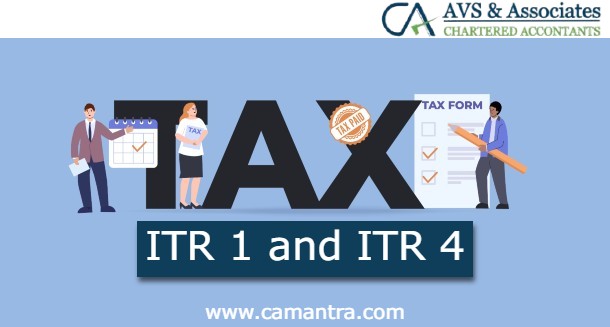With the Income Tax Return (ITR) filing season underway, selecting the correct ITR form is crucial for hassle-free compliance. For individuals and small businesses with relatively simple income structures, ITR-1 (SAHAJ) and ITR-4 (SUGAM) are the most commonly used forms. Let’s explore who can file using these forms, recent updates, and how to ensure your return is filed correctly for Assessment Year 2025–26.
ITR-1 (SAHAJ): Who Should Use It?
ITR-1 is primarily designed for resident individuals whose total income does not exceed INR 50 lacs and includes the following sources:
- Salary or pension
- Income from one house property (excluding loss brought forward)
- Additional income including bank interest, interest from fixed deposits, and other non-salary sources.
- Agricultural income up to INR 5,000
- LTCG up to INR 1.25 lacs us 112A (new inclusion from AY 2025–26)
Not Eligible for ITR-1:
Avoid using ITR-1 if you:
- Are a director in a company
- Hold unlisted equity shares
- Have business or professional income
- Hold overseas assets or receive income from abroad.
- Have capital gains exceeding INR 1.25 lacs or carry-forward losses
ITR-4 (SUGAM): Simplified for Presumptive Income
ITR-4 is meant for resident individuals, Hindu Undivided Families (HUFs), and firms (excluding LLPs) with presumptive income under Sections 44AD, 44ADA, or 44AE, and a total income up to INR 50 lacs. ITR-4 is applicable when your income consists of the following sources:
- Business income under presumptive taxation
- Professional income declared under Section 44ADA
- Earnings from a salary, a single residential property, and miscellaneous income sources.
- Agricultural income up to INR 5,000
- Long-term capital gains up to INR 1.25 lacs (new from AY 2025–26)
Not Eligible for ITR-4:
You cannot file ITR-4 if you:
- Are a director in a company
- Have invested in unlisted shares
- Possess two or more house properties that generate income.
- Have foreign income or assets
- Are a partner in a firm
- Earn business income that does not fall under the presumptive taxation scheme
Key Changes for AY 2025–26
Here are the recent updates introduced for ITR-1 and ITR-4:
- LTCG inclusion: Both ITR-1 and ITR-4 now accommodate long-term capital gains up to INR 1.25 lacs (Section 112A), benefiting taxpayers with limited exposure to listed stock investments.
- Increased presumptive income limits:
- The turnover limit under Section 44AD has been increased to ₹3 crore.
- Section 44ADA threshold is INR 75 lacs
This increased threshold is applicable only when cash transactions make up no more than 5% of total gross receipts.
- Mandatory disclosures:
- Taxpayers must now report all active bank accounts and identify one for receiving income tax refunds.
- Even exempt incomes such as LTCG us 112A must be disclosed properly.
- Form 10-IEA requirement: To exit the new tax regime and file under the old one using ITR-4, submission of Form 10-IEA is mandatory beforehand.
Quick Comparison: ITR-1 vs. ITR-4
| Criteria | ITR-1 (SAHAJ) | ITR-4 (SUGAM) |
| Income Limit | Up to INR 50 lacs | Up to INR 50 lacs |
| Income Type | Salary, 1 house property, other sources | Presumptive business/profession, others |
| LTCG Allowed | Up to INR 1.25 lacs under Sec 112A | Same |
| Agricultural Income | Up to INR 5,000 | Up to INR 5,000 |
| Foreign Assets/Income | Not allowed | Not allowed |
| Business/Professional | Not allowed | Allowed under presumptive scheme |
Filing Tips
- Deadline: July 31, 2025, for individuals not subject to audit
- Pre-filled Data: Use Form 26AS, Annual Information Statement (AIS), and Taxpayer Information Summary (TIS).
- E-Verification: E-Verification can be completed using Aadhaar OTP, net banking, or an Electronic Verification Code (EVC) after filing your return.
- Refunds: Ensure correct bank details and IFSC code for timely refunds
Final Thoughts
Your eligibility to file ITR-1 or ITR-4 is determined by the nature of your income and overall tax situation. While both forms now accommodate long-term capital gains up to INR 1.25 lacs, each comes with its own eligibility filters. To avoid filing errors or notices, ensure your income type and source match the form you select. When in doubt, consult a tax professional or use the Income Tax e-filing portal’s form assistance.

